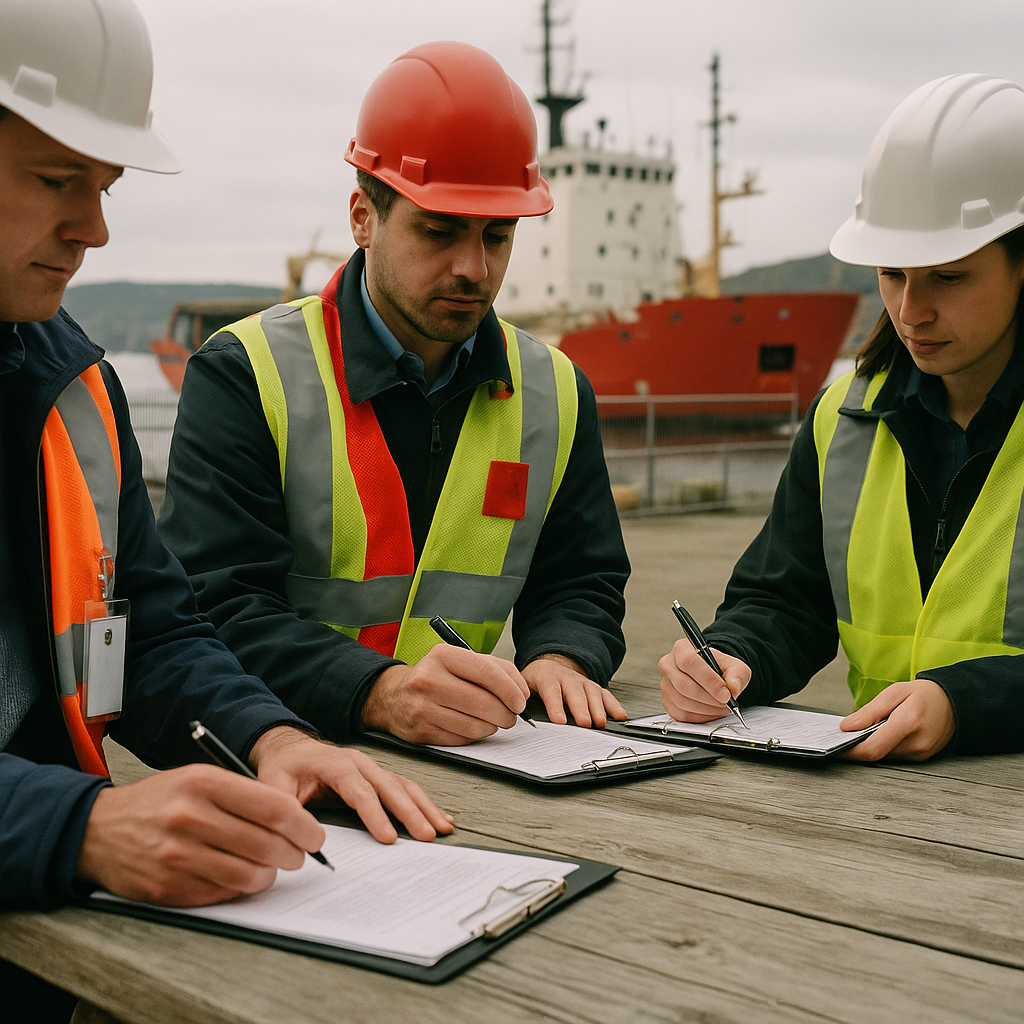
Canada's Davie Shipyard Eyes U.S. Partnerships to Secure Icebreaker Contract
In the high-stakes world of maritime construction, the race to build Canada’s next generation of icebreakers has taken a strategic turn. Davie Shipyard, one of Canada’s leading shipbuilders, is looking south of the border to U.S. shipyards as a pivotal component in its bid to secure a major icebreaker contract. This development comes at a time when the demand for robust icebreaking capabilities is intensifying due to climate change and increased Arctic activity. The collaboration between Canadian and American shipyards could redefine the competitive landscape and have significant implications for both countries’ maritime industries.
The Strategic Importance of Icebreakers
Icebreakers are crucial for maintaining year-round navigation in the Arctic, a region that is becoming increasingly accessible due to melting ice caps. This accessibility has sparked interest from global powers eager to exploit the Arctic’s untapped resources and strategic shipping routes. As such, Canada’s need for a modern icebreaking fleet is not just a matter of national pride but a strategic imperative. According to gCaptain, Davie Shipyard is positioning itself as a frontrunner to deliver these critical assets, with the potential to enhance Canada’s sovereignty and operational capabilities in the Arctic.
Davie’s Bid: A Cross-Border Approach
Davie’s approach to securing the icebreaker contract involves leveraging partnerships with U.S. shipyards. This strategy is not only about sharing the construction workload but also about tapping into the advanced technologies and expertise available in the United States. By collaborating with U.S. partners, Davie aims to enhance its bid’s competitiveness, offering a blend of Canadian innovation and American technical prowess. This cross-border collaboration could set a precedent for future shipbuilding projects, fostering a North American maritime alliance that benefits both nations.
Economic and Regulatory Considerations
The potential partnership between Davie and U.S. shipyards also brings to light several economic and regulatory considerations. The North American Free Trade Agreement (NAFTA) and its successor, the United States-Mexico-Canada Agreement (USMCA), provide frameworks that could facilitate such international collaborations. However, navigating the regulatory landscapes of both countries remains a challenge. According to gCaptain, Davie’s strategy includes ensuring compliance with these trade agreements while maximizing the economic benefits for both Canadian and American stakeholders.
Furthermore, the collaboration could stimulate job creation and economic activity on both sides of the border. For the U.S., this partnership represents an opportunity to engage in high-value shipbuilding projects, potentially revitalizing shipyards that have seen reduced activity in recent years. For Canada, it means access to cutting-edge technology and expertise, which could expedite the icebreaker construction process and ensure the delivery of state-of-the-art vessels.
Geopolitical Implications and Supply Chain Dynamics
The geopolitical implications of this icebreaker contract extend beyond the immediate economic and strategic benefits. As Arctic routes become more navigable, the region is poised to become a focal point of international competition. By enhancing its icebreaking capabilities, Canada can assert its influence in the Arctic, countering the growing presence of other nations, particularly Russia and China, which have been investing heavily in their own icebreaking fleets.
Supply chain dynamics also play a critical role in this scenario. The construction of icebreakers requires specialized materials and components, many of which are sourced internationally. A partnership with U.S. shipyards could streamline supply chains, reducing lead times and costs associated with procuring these essential materials. According to gCaptain, this collaboration could mitigate potential supply chain disruptions, ensuring a steady flow of resources necessary for the timely completion of the icebreakers.
Analyst Perspectives: Opportunities and Challenges
Industry analysts view Davie’s strategy as a calculated move that could yield significant dividends. On the positive side, the partnership with U.S. shipyards could enhance Davie’s competitive edge, positioning it as a leader in the global icebreaker market. This collaboration could also foster innovation, as both Canadian and American shipyards share best practices and technologies.
However, analysts also caution about potential challenges. The complexities of managing a cross-border project, particularly in the context of differing regulatory environments and labor standards, could pose significant hurdles. Additionally, the geopolitical landscape is fraught with uncertainties that could impact the project’s execution and success.
Conclusion: Navigating the Future of Icebreaker Construction
In conclusion, Davie Shipyard’s pursuit of a major icebreaker contract through collaboration with U.S. shipyards represents a bold and strategic approach to a complex challenge. The base scenario suggests a successful partnership that enhances North American maritime capabilities, while the bull scenario envisions Davie emerging as a global leader in icebreaker construction. Conversely, the bear scenario highlights potential regulatory and geopolitical obstacles that could impede progress.
Ultimately, the outcome of this venture will depend on the ability of Davie and its U.S. partners to navigate these challenges and capitalize on the opportunities presented by a rapidly changing Arctic landscape. As the world watches the unfolding developments, the implications of this cross-border collaboration will resonate far beyond the shipyards, shaping the future of Arctic navigation and North American maritime strategy.
Sources (selection):
